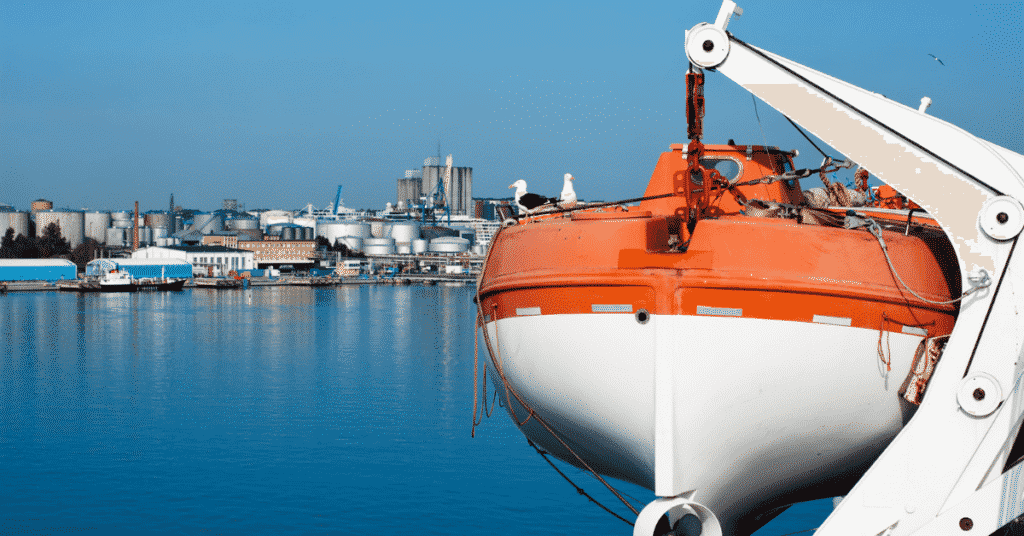Watch: Understanding Autonomous Port Operations
Autonomous Ports represent the future of port operations, leveraging cutting-edge technology to streamline processes and improve efficiency.
Let’s break down the key components that make autonomous ports tick.
First, there are automated equipment vehicles and different types of cranes, including rail-mounted cranes in the container yard and ship-to-shore cranes in the jetty.
These machines handle tasks such as ship-to-shore operations, yard management, and gate automation, all without direct human involvement.
Behind the scenes, equipment and control systems play a crucial role in managing and optimising these automated machines.
They integrate technologies like artificial intelligence and sensors to ensure smooth operations and continuous improvement through machine learning.
The terminal control tower acts as the brain of the port. It orchestrates all operations and uses advanced analytics and decision-making tools to optimise tasks such as demand management, scheduling, and workflow coordination.
While automation is key, human oversight remains essential for safety. Staff oversee operations from a distance, intervening when necessary.
Mixed reality technologies like virtual and augmented reality enhance maintenance tasks while leveraging human experience and judgment.
Autonomous ports are seamlessly integrated into the wider supply chain, exchanging data to optimise operations and respond quickly to changes.
This connectivity enables efficient coordination with shipping companies, logistics providers and other stakeholders.
Now, let’s examine how all these components work together to supply containers to ships.
Automated rail-mounted gantry cranes load the containers on autonomous container vehicles, which then move them from storage yards to the jetty where the ship is docked. Autonomous container trucks use advanced sensors and routing technologies to optimise roads to minimise fuel consumption, ultimately reducing carbon emissions.
Equipment and control systems orchestrate the movement of these automated machines. They monitor vehicle health and ensure smooth coordination to minimise downtime and maximise efficiency.
The ship-to-shore gantry, remotely operated by a gantry crane operator in an air-conditioned room located in the Port, then picks up this container and loads it onto the ship as per the loading plan.
While machines handle the heavy lifting, human operators remain vigilant, overseeing operations and intervening when necessary.
Their expertise and judgment ensure safety and efficiency throughout the container loading process.
While autonomous ports offer immense potential, they face several challenges and risks.
Implementing autonomous technologies may lead to job redundancies; however, upscaling employees for technical roles and anticipating increased shipping activity can help offset these losses.
Autonomous port operations rely heavily on data and connectivity, posing cyber security threats. Robust system security and legislative frameworks are essential to mitigate these risks and ensure safe operations.
Despite these challenges, autonomous ports represent a transformative shift in port operations, offering increased efficiency, safety, and integration with the global supply chain.
Watch This Video to Know More-

About Author
Zahra is an alumna of Miranda House, University of Delhi. She is an avid writer, possessing immaculate research and editing skills. Author of several academic papers, she has also worked as a freelance writer, producing many technical, creative and marketing pieces. A true aesthete at heart, she loves books a little more than anything else.
Disclaimer :
The information contained in this website is for general information purposes only. While we endeavour to keep the information up to date and correct, we make no representations or warranties of any kind, express or implied, about the completeness, accuracy, reliability, suitability or availability with respect to the website or the information, products, services, or related graphics contained on the website for any purpose. Any reliance you place on such information is therefore strictly at your own risk.
In no event will we be liable for any loss or damage including without limitation, indirect or consequential loss or damage, or any loss or damage whatsoever arising from loss of data or profits arising out of, or in connection with, the use of this website.
Do you have info to share with us ? Suggest a correction
Disclaimer :
The information contained in this website is for general information purposes only. While we endeavour to keep the information up to date and correct, we make no representations or warranties of any kind, express or implied, about the completeness, accuracy, reliability, suitability or availability with respect to the website or the information, products, services, or related graphics contained on the website for any purpose. Any reliance you place on such information is therefore strictly at your own risk.
Related Articles
Daily Maritime News, Straight To Your Inbox
Sign Up To Get Daily Newsletters
Join over 60k+ people who read our daily newsletters
By subscribing, you agree to our Privacy Policy and may receive occasional deal communications; you can unsubscribe anytime.






BE THE FIRST TO COMMENT